Stratocaster 12-String Guitar




Extended headstock with all tuners interleaved on one side. Strip tuners gave tight spacing, but required very precise drilling. EBay body. Home Depot neck.
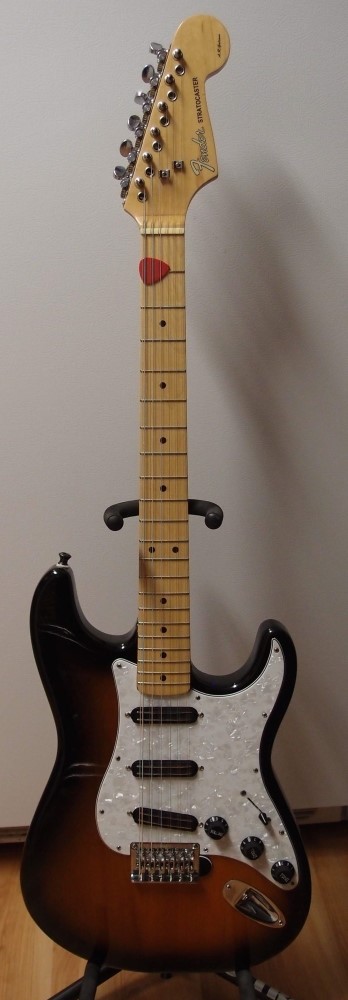
The controls are not standard Stratocaster. The bridge tone is a two-way balance pot with a center detent. The normal direction is treble roll-off, the other direction is bass roll-off. This is a good setup, because if you do both at once, you end up with a very strangled sound.
The neck tone control is actually a rotary switch that selects the internal mode for all three pickups simultaneously - series, parallel, or coil-tap. Series and parallel modes are both humbucking, as are the coil-tap combinations. Parallel and coil-tap modes give that nice sixties jangle.
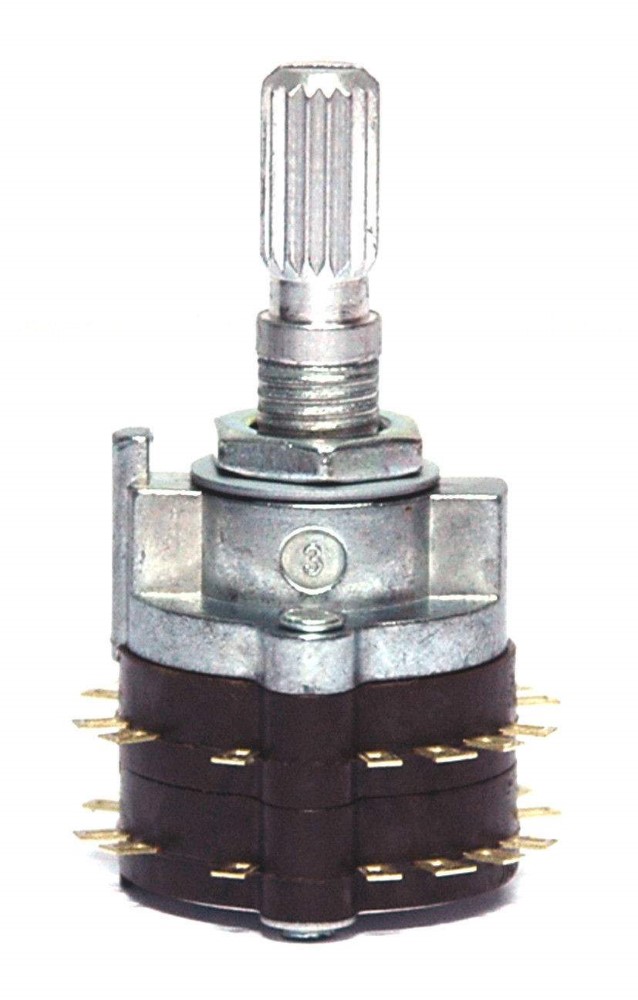
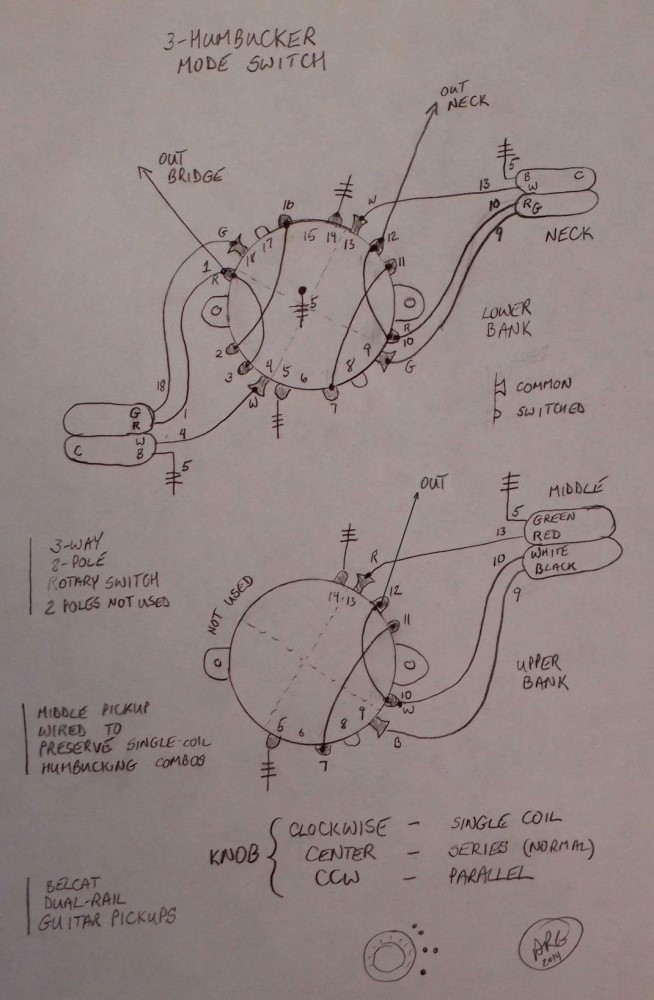
So a very standard-looking Stratocaster control set actually does quite a bit more than a factory Fender. This sort of thing is also very useful on a bass.
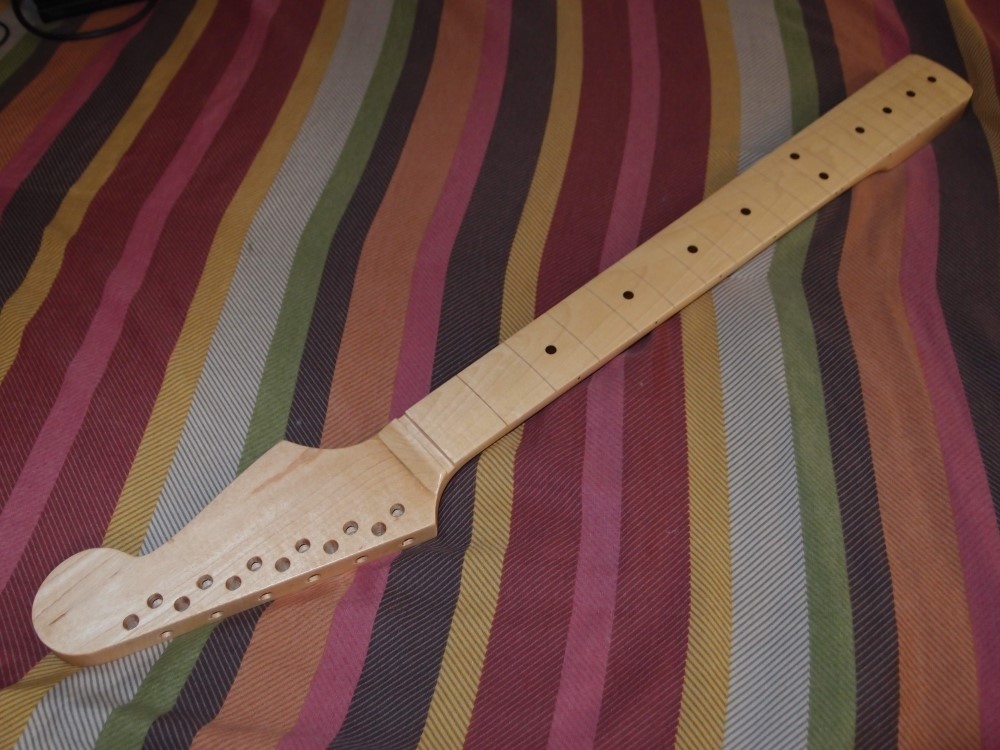
The older blind-slotted Rics are famous for being difficult to string-up. The through-slotted Rics are better, but carving a slot through the entire headstock here would have weakened it too much. Instead, the holes go through, and when you line up the tuner posts properly, you can see daylight through them. That should work. The tuners are six-on-a-plate, open gear, to save weight and money. Perfectly functional, and very vintage-looking. Another advantage is that the mounting screws are on the centerline, so the assembly fits on a headstock that is only slightly thicker and longer than normal.

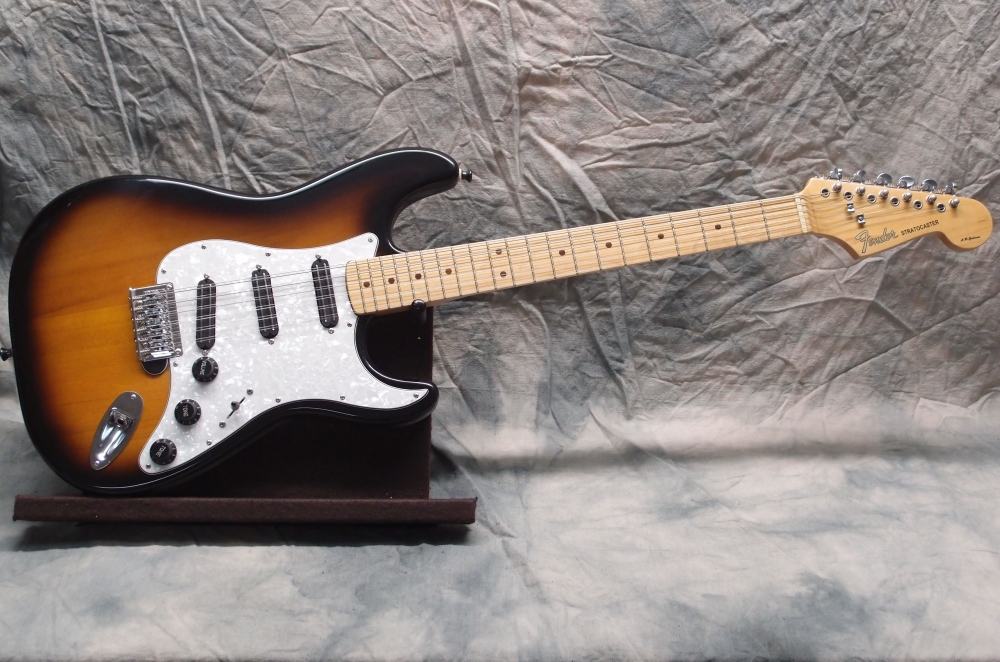
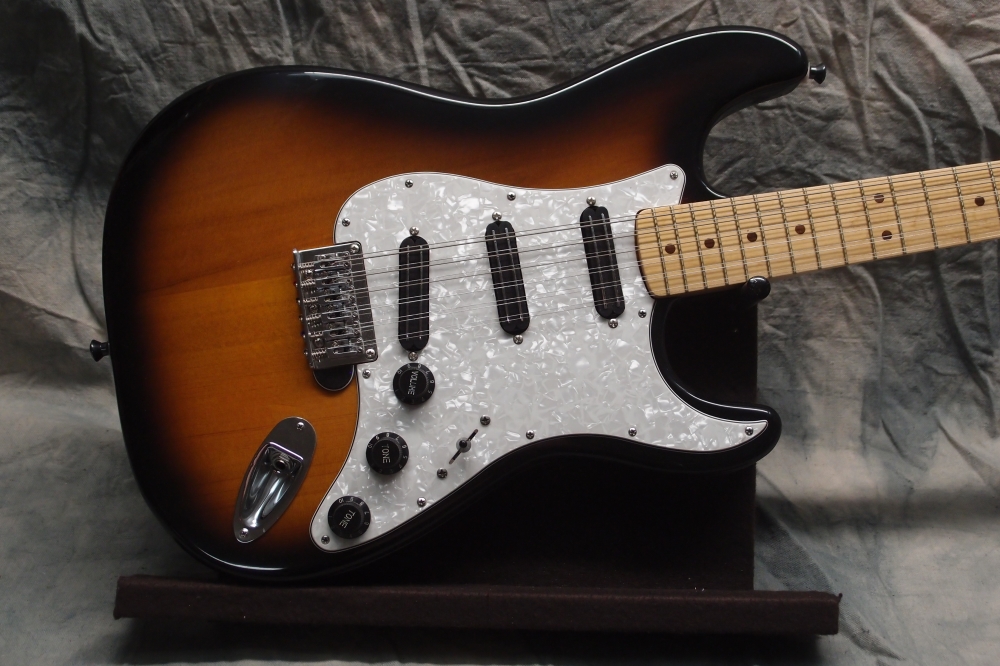
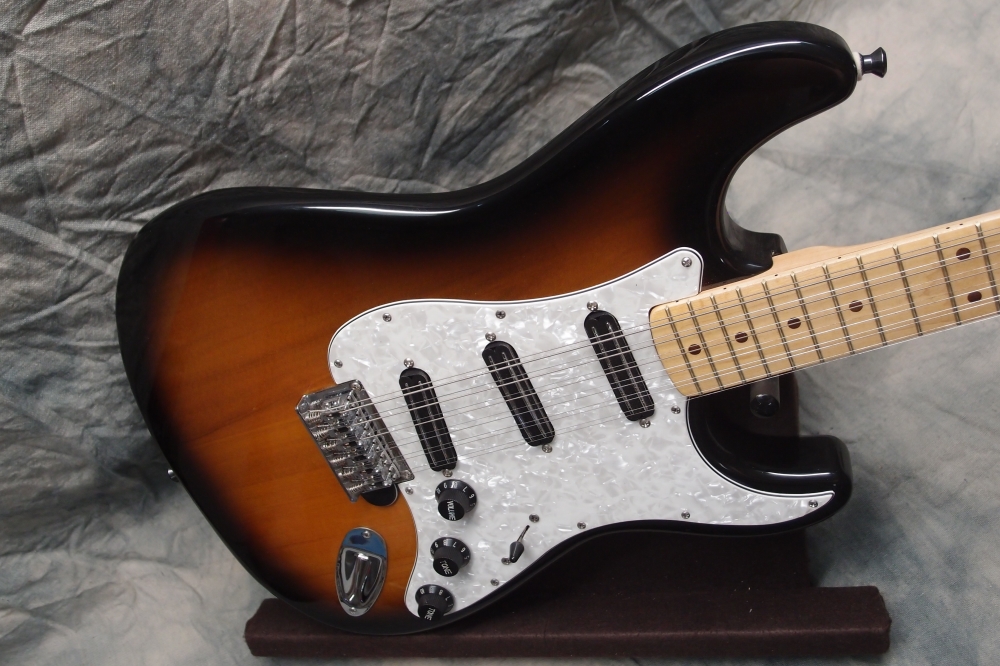
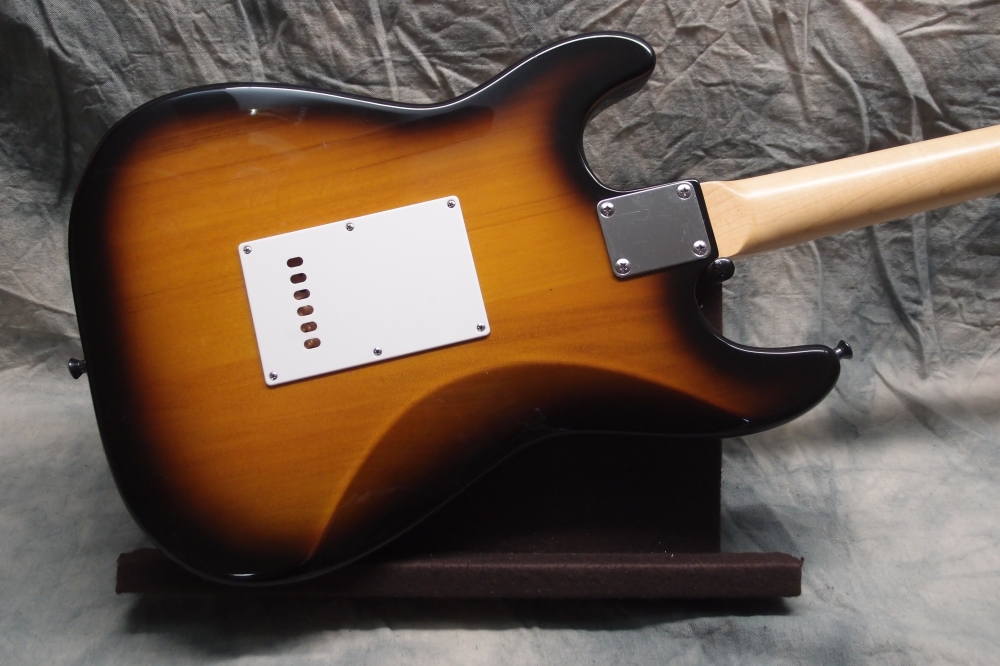
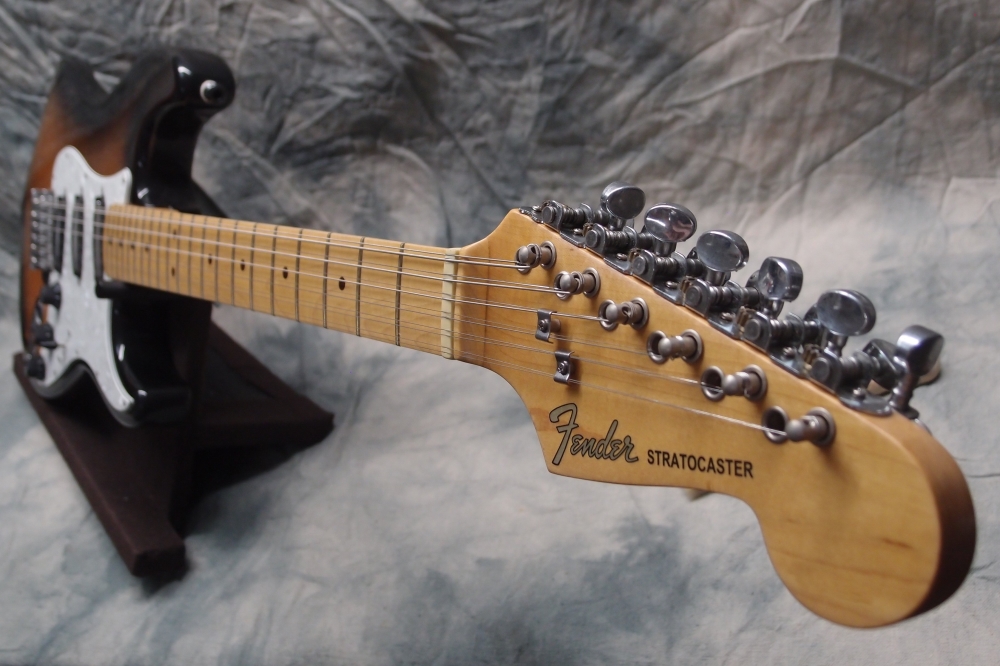
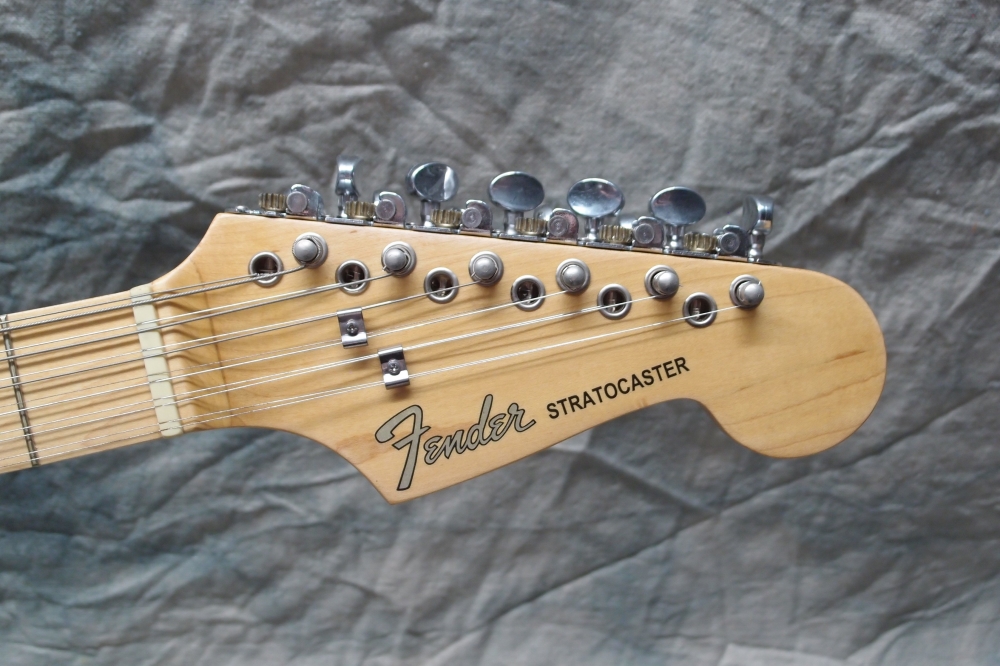
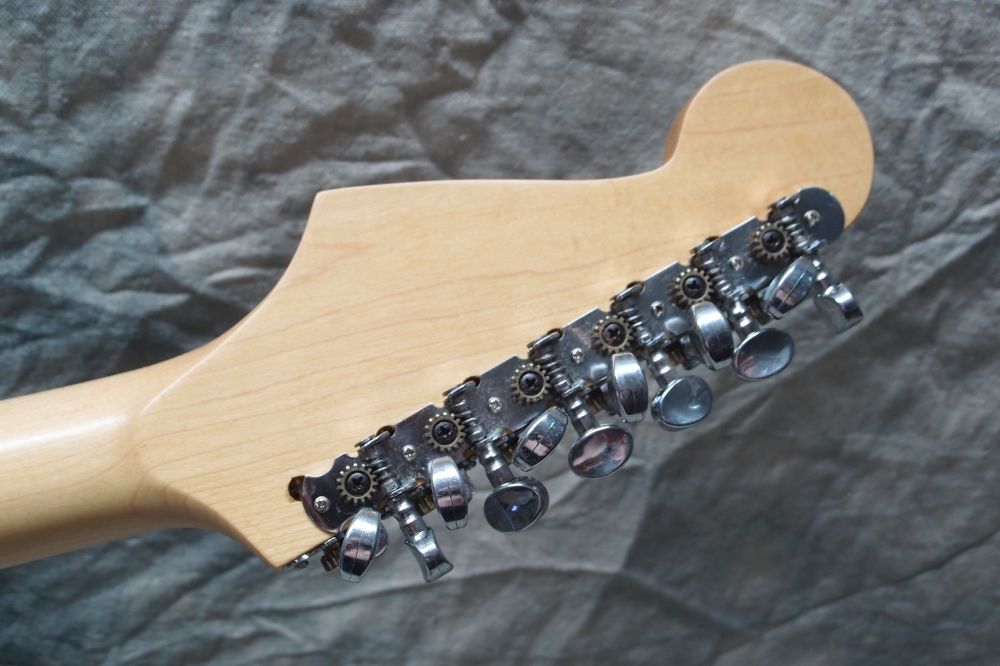

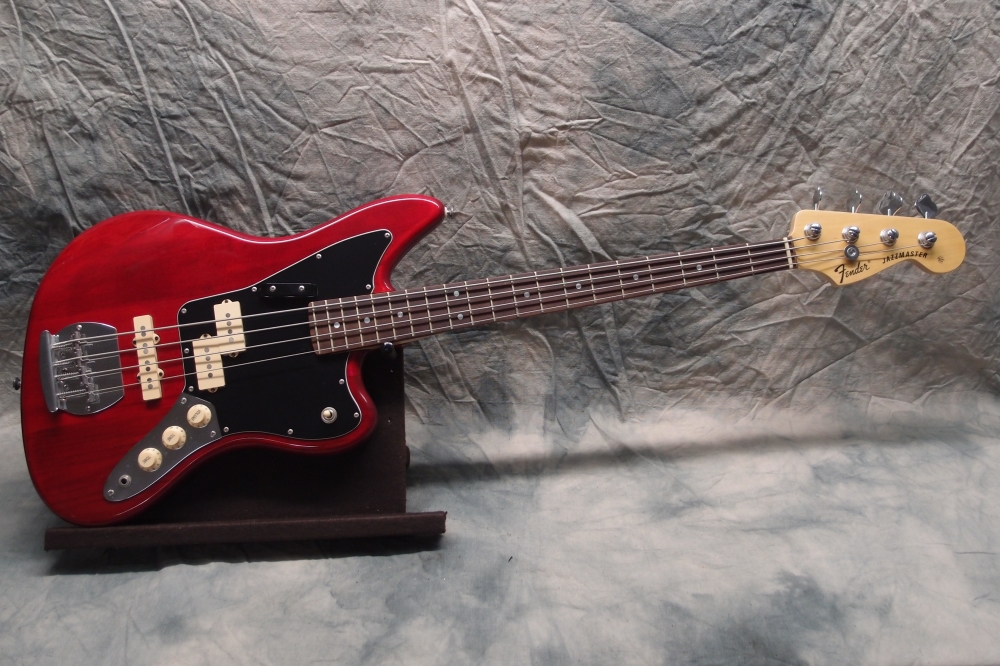
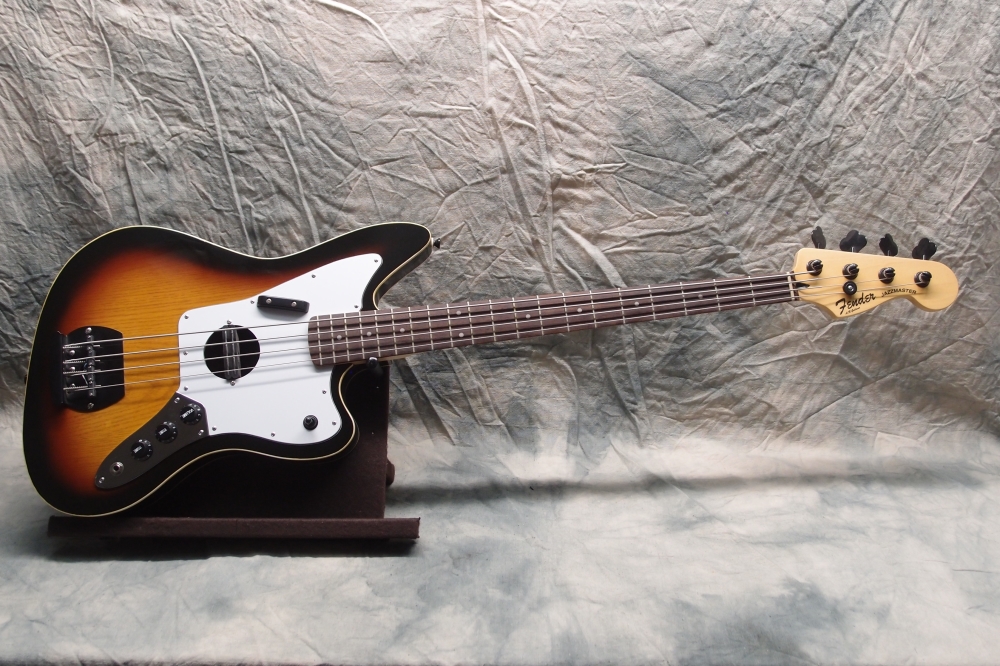
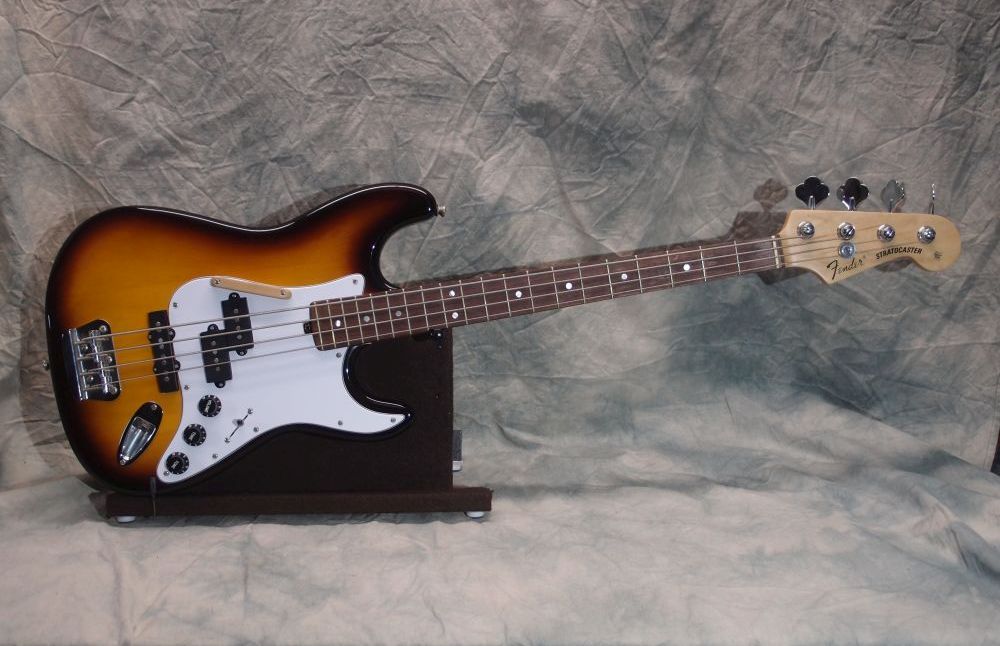
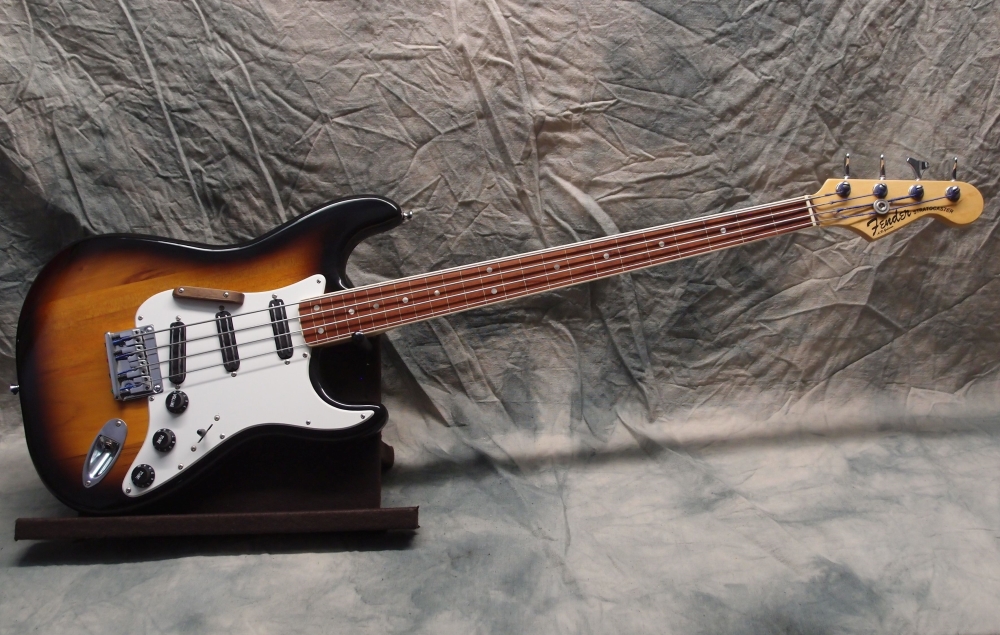
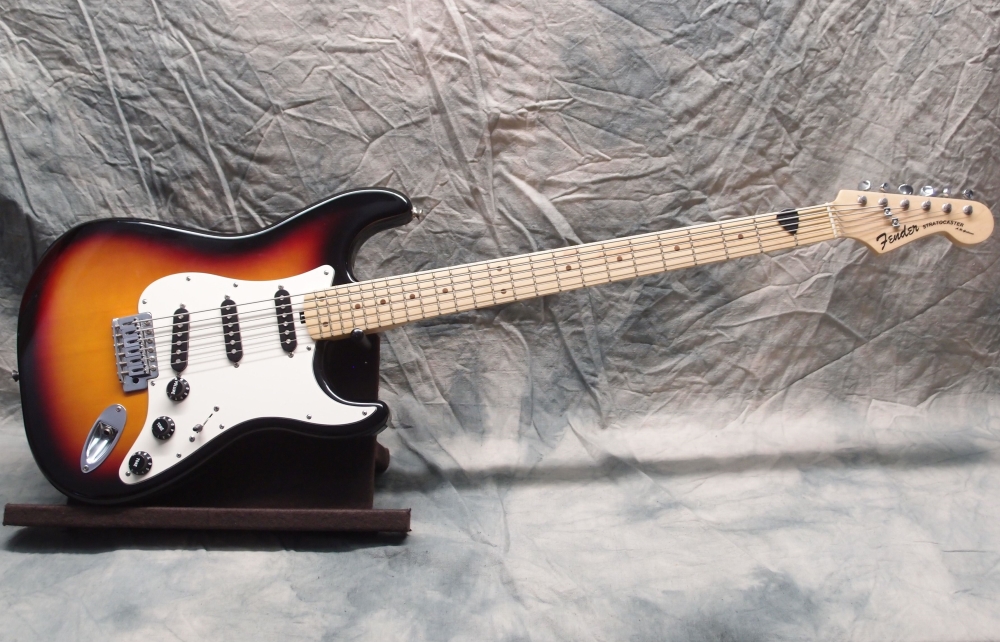
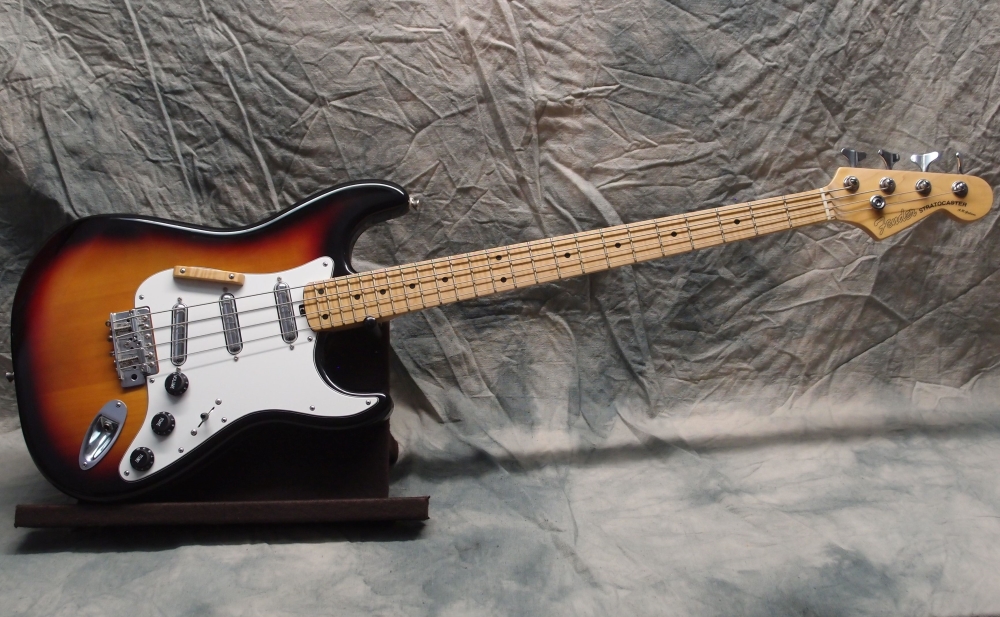
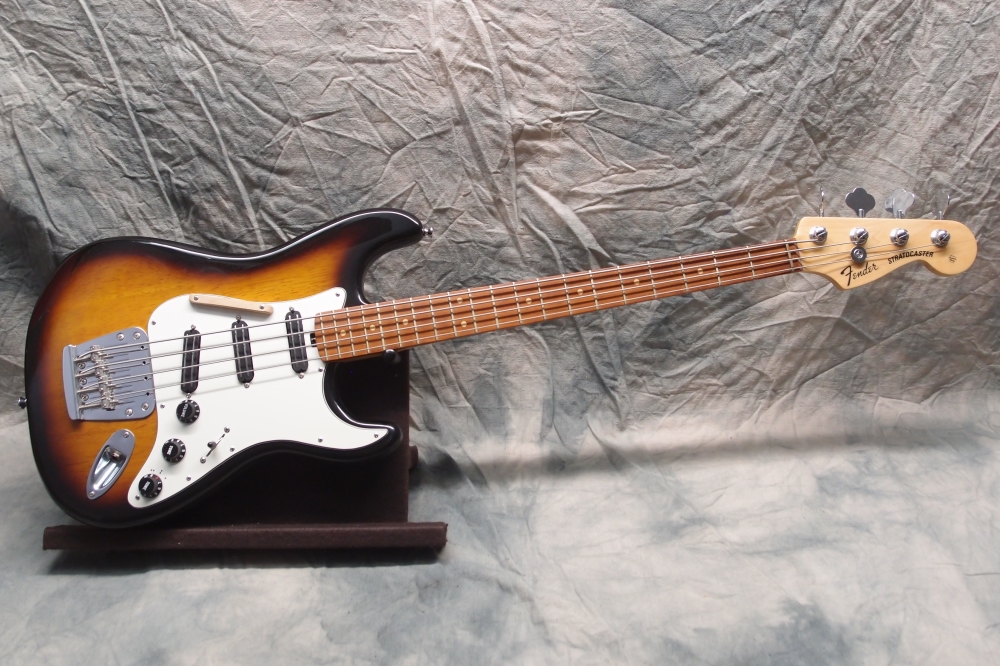
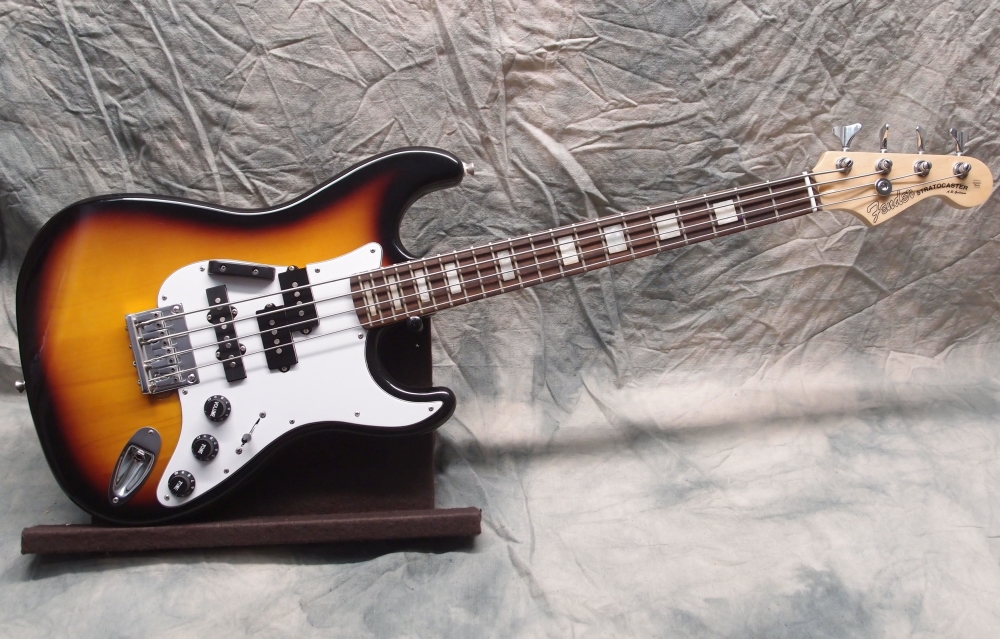
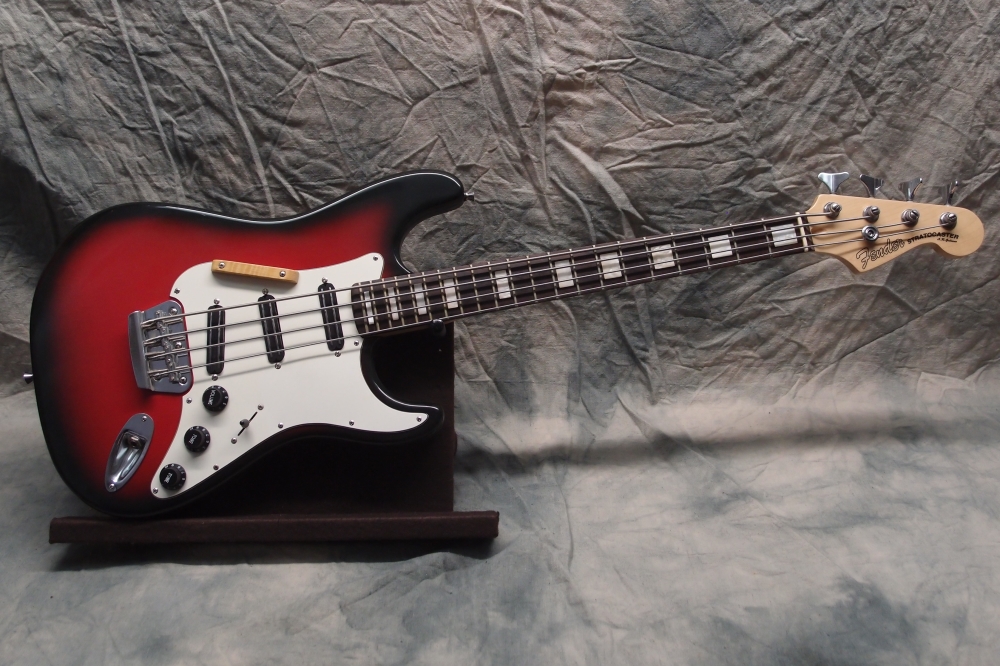
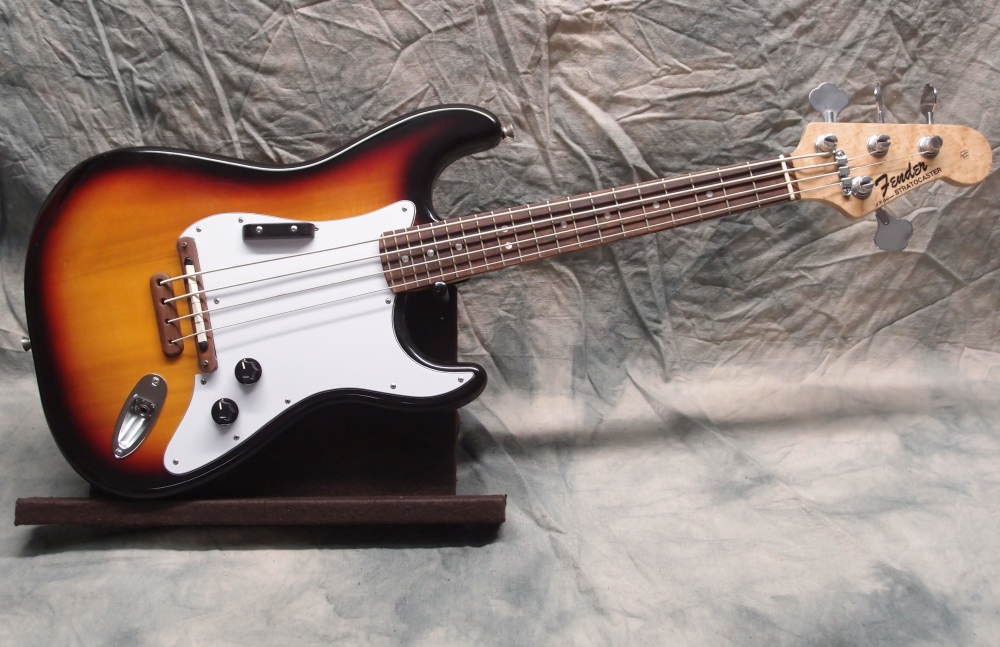
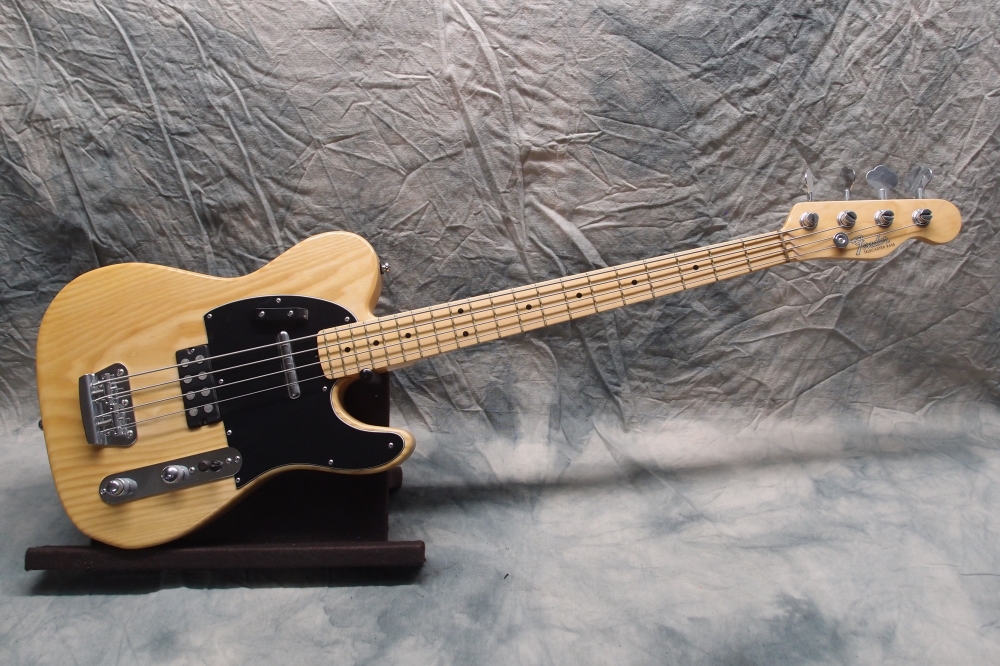
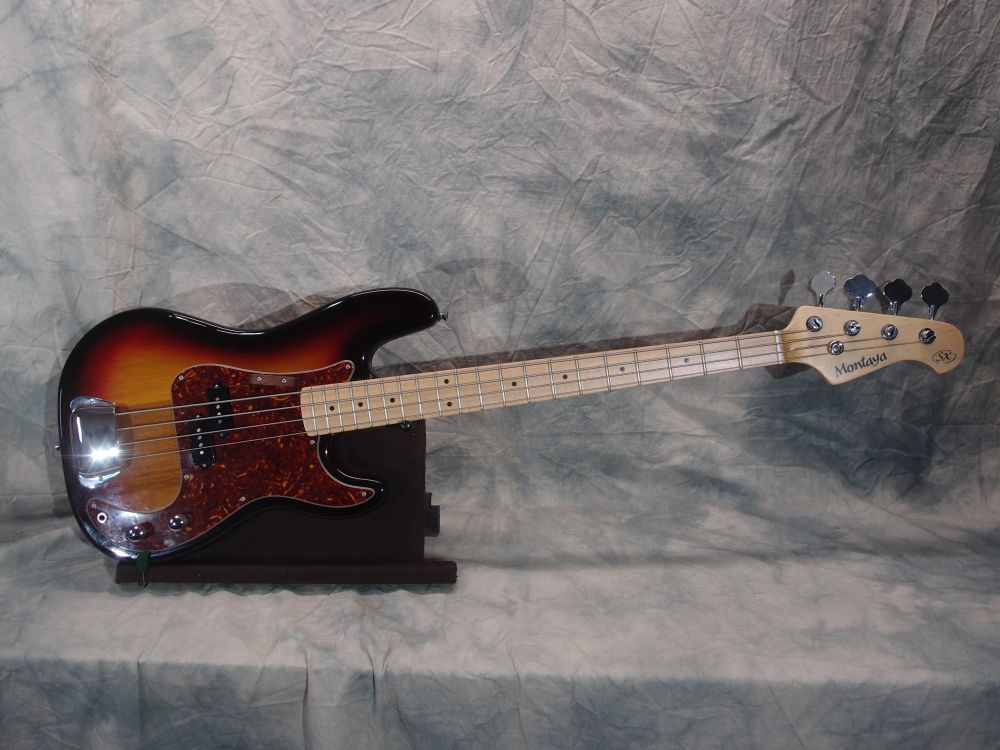
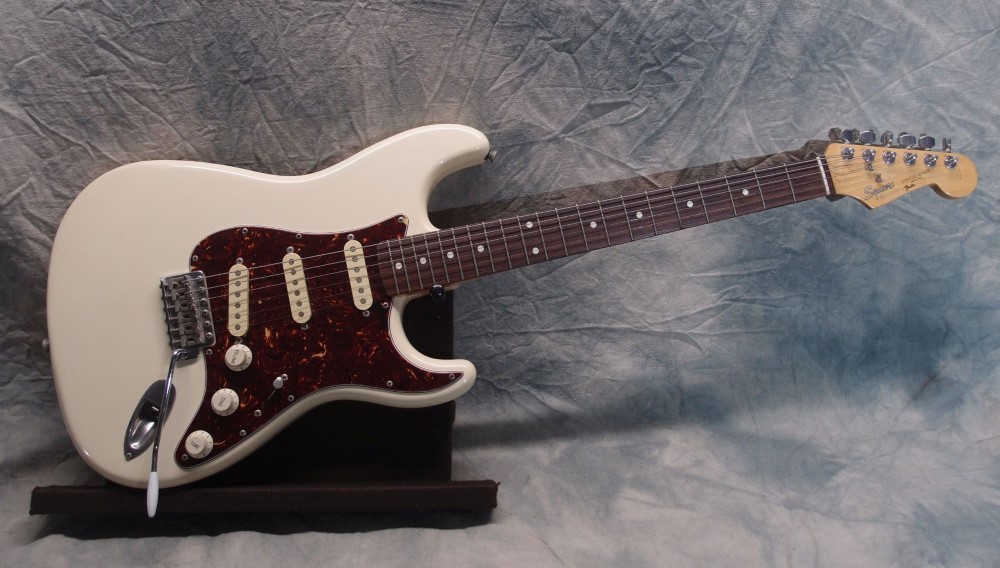
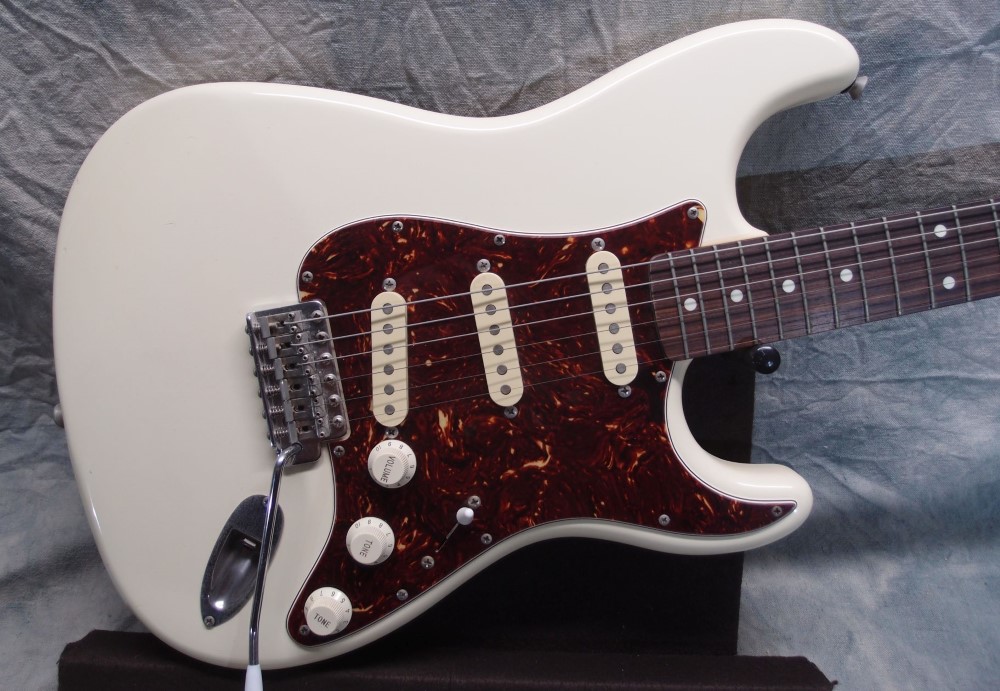
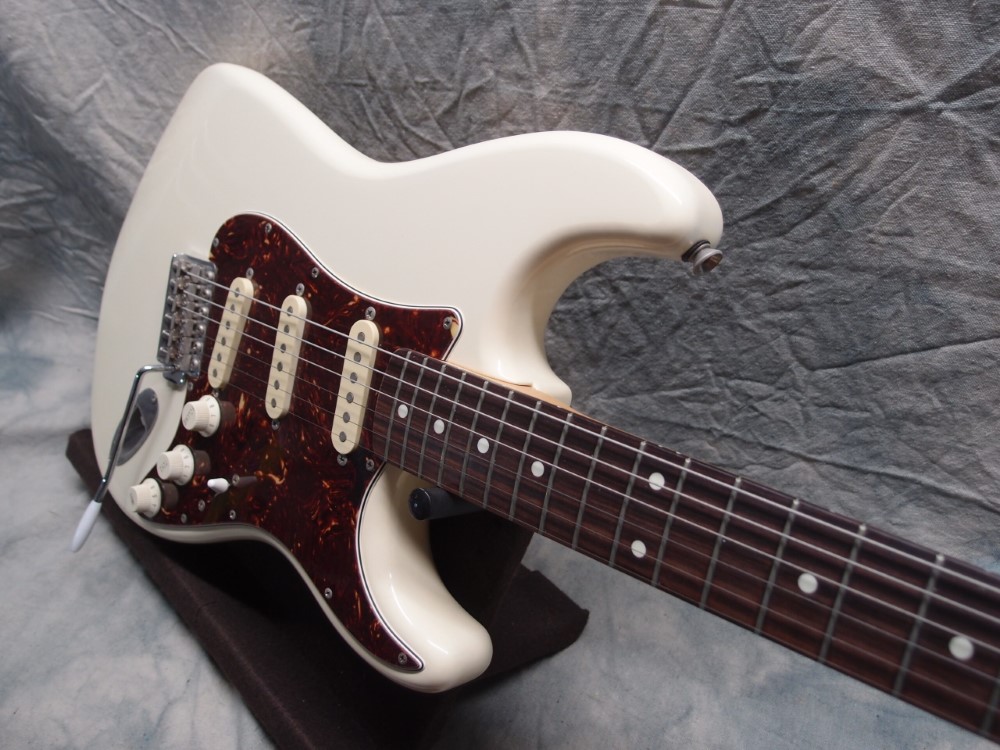
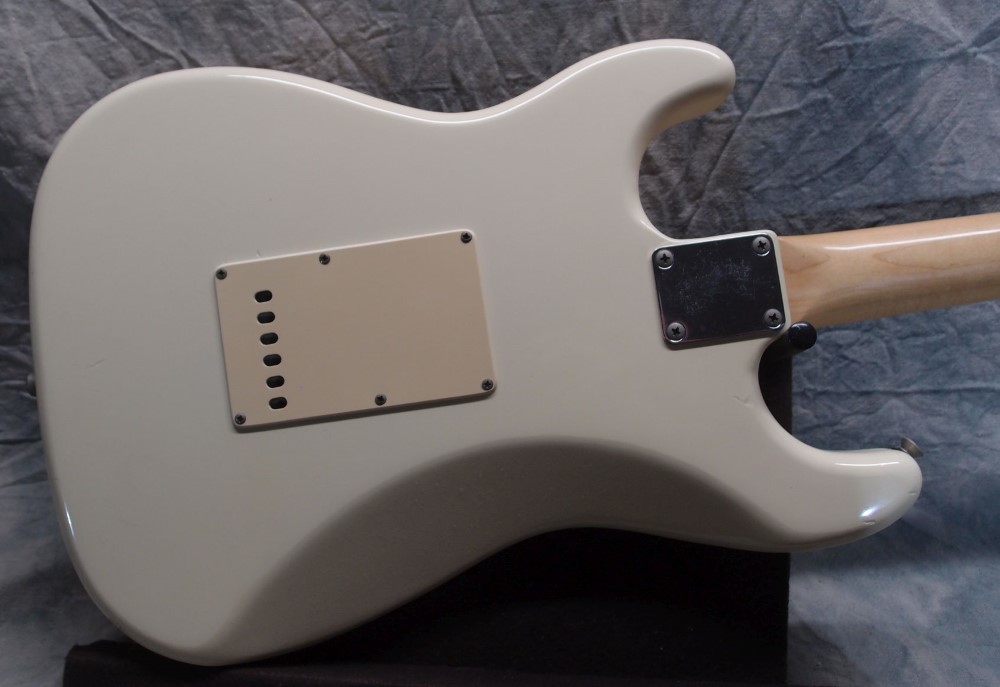
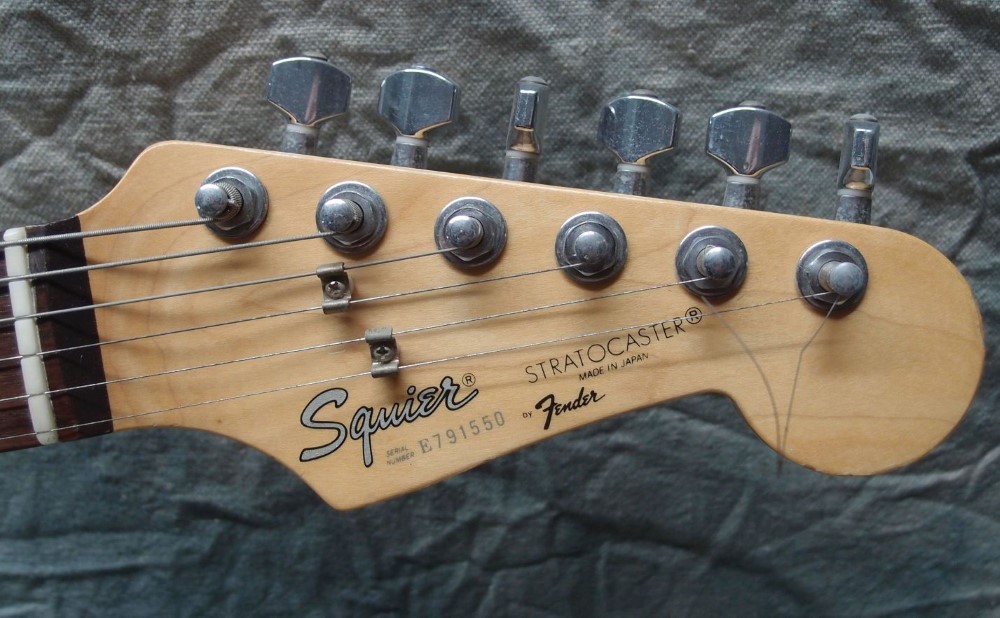
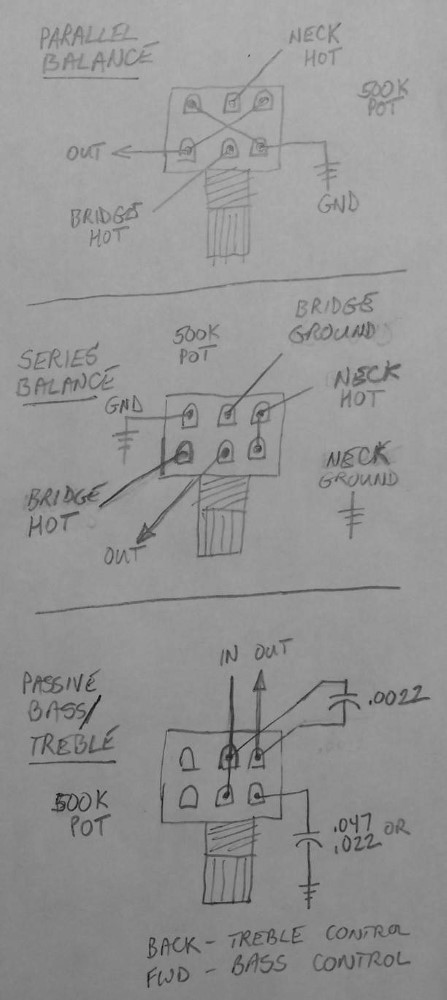
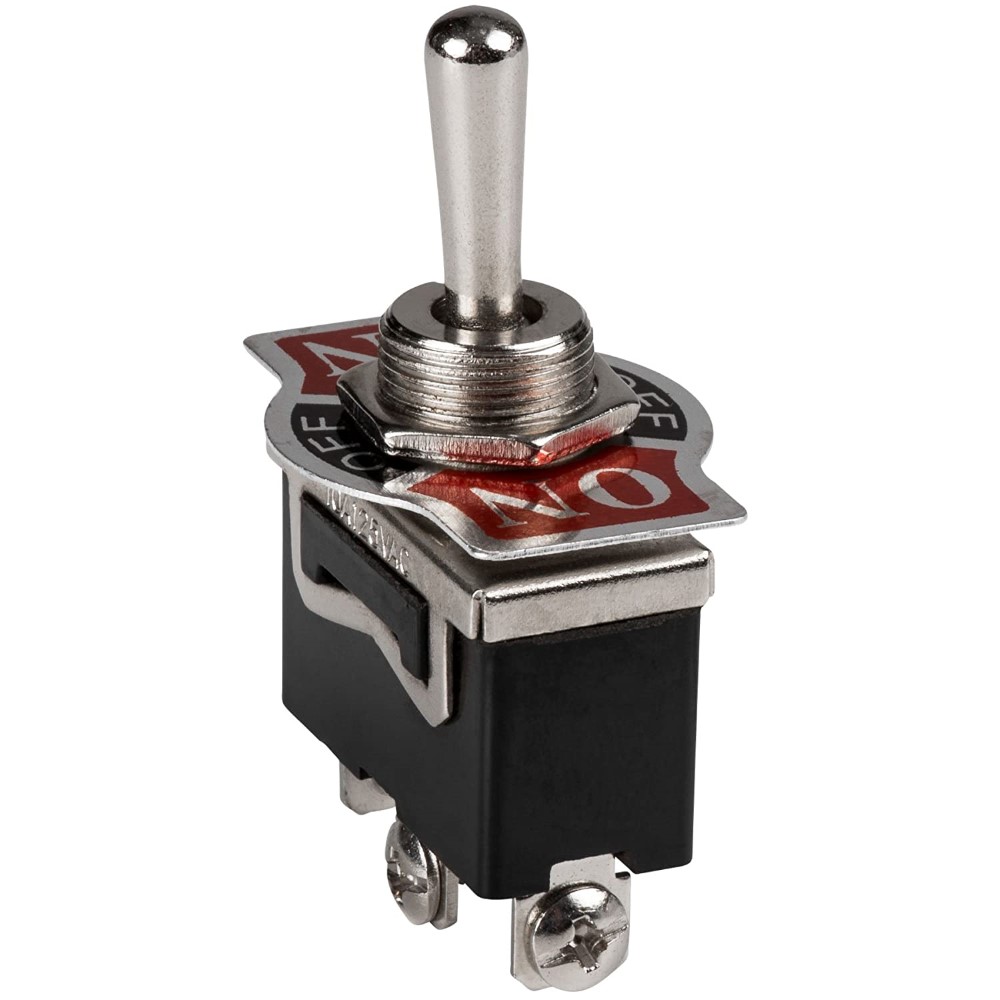

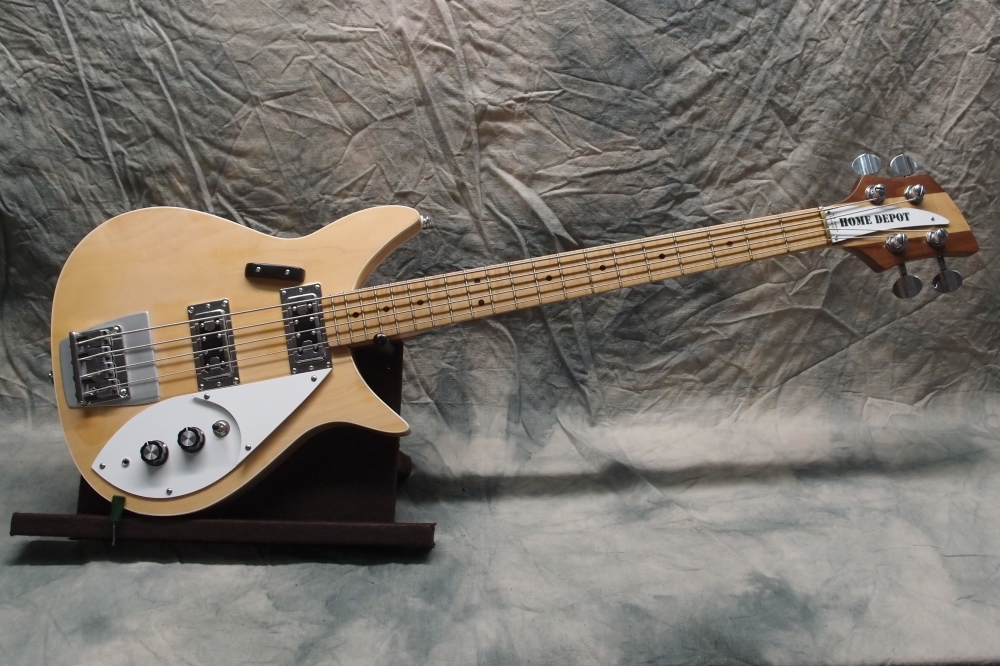
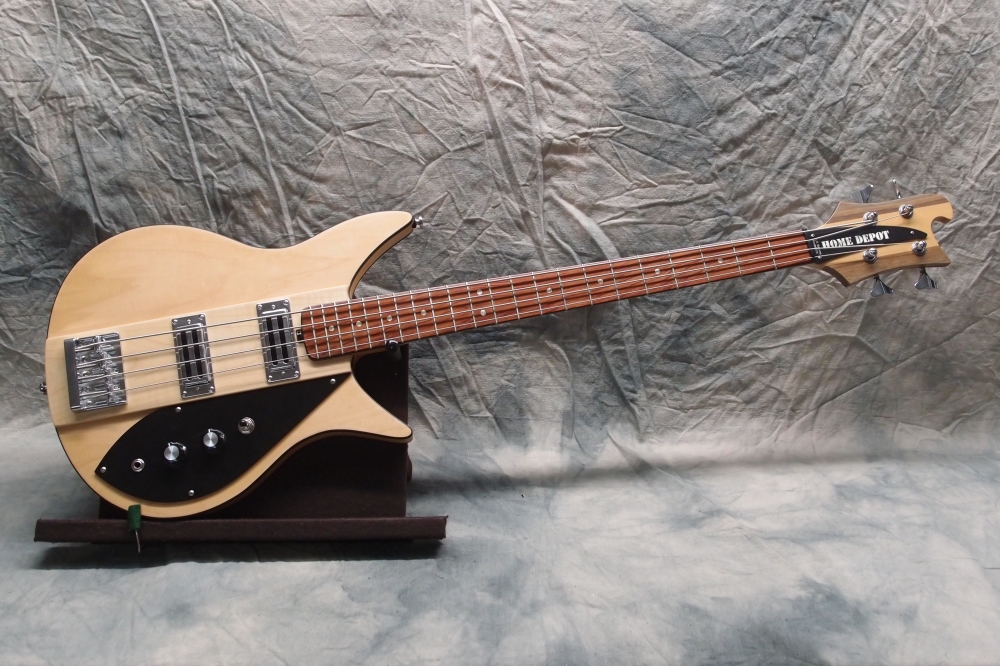
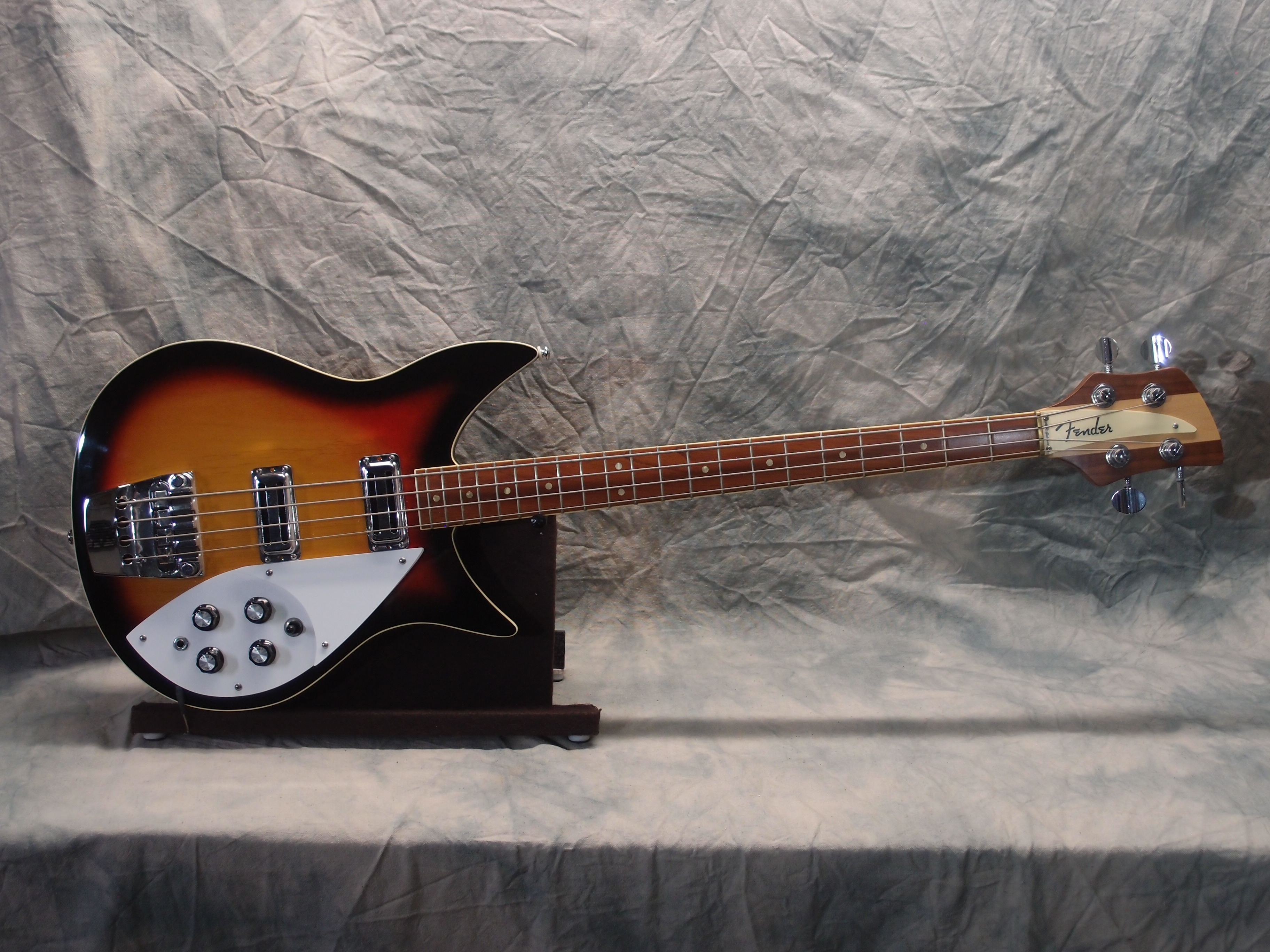
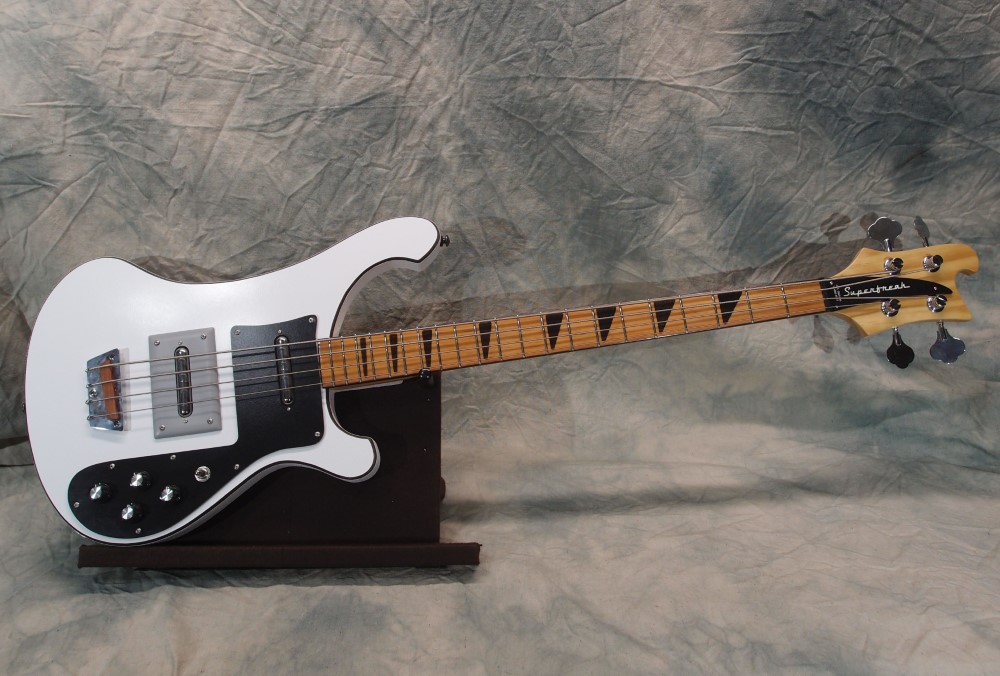
Questions or Inquiries?
Just want to say Hello? Sign the .